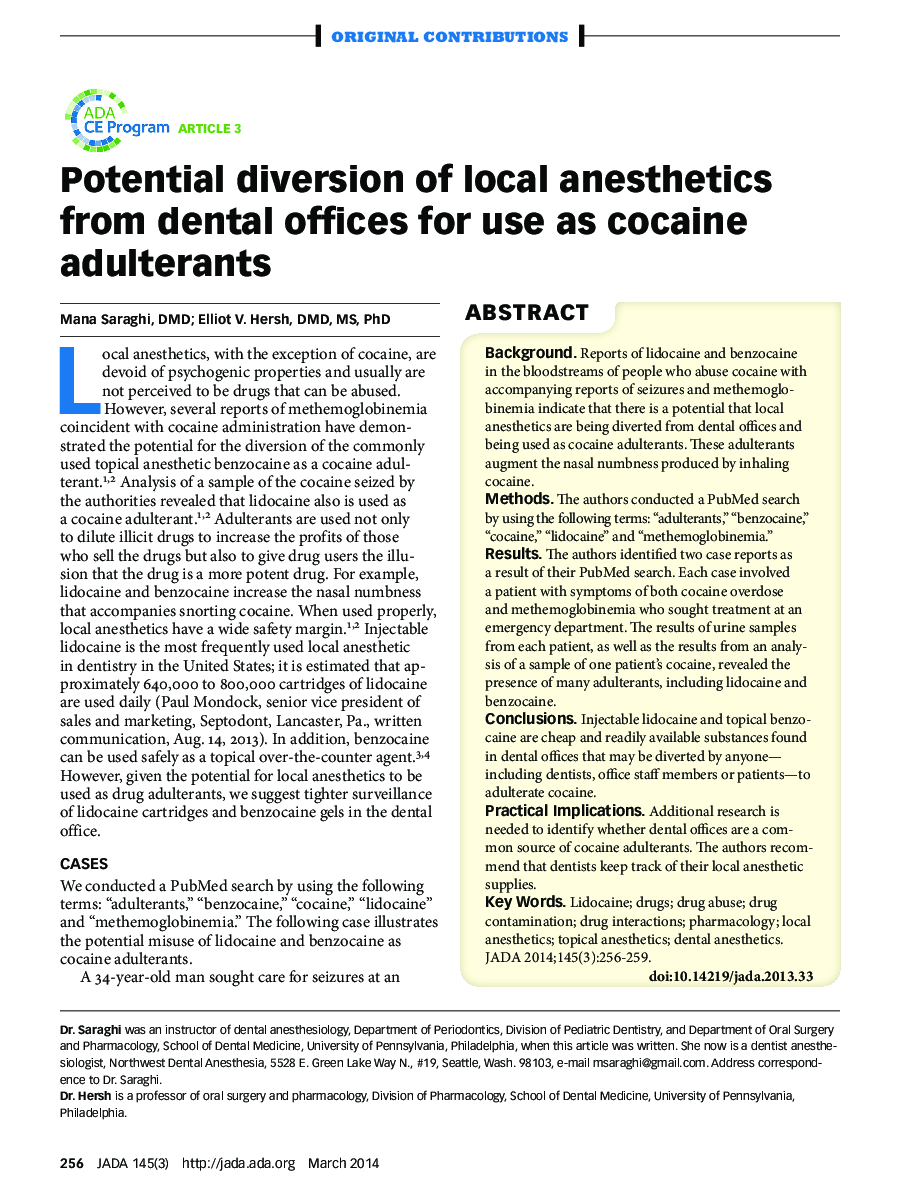| Article ID | Journal | Published Year | Pages | File Type |
|---|---|---|---|---|
| 3137241 | The Journal of the American Dental Association | 2014 | 4 Pages |
ABSTRACTBackgroundReports of lidocaine and benzocaine in the bloodstreams of people who abuse cocaine with accompanying reports of seizures and methemoglobinemia indicate that there is a potential that local anesthetics are being diverted from dental offices and being used as cocaine adulterants. These adulterants augment the nasal numbness produced by inhaling cocaine.MethodsThe authors conducted a PubMed search by using the following terms: “adulterants,” “benzocaine,” “cocaine,” “lidocaine” and “methemoglobinemia.”ResultsThe authors identified two case reports as a result of their PubMed search. Each case involved a patient with symptoms of both cocaine overdose and methemoglobinemia who sought treatment at an emergency department. The results of urine samples from each patient, as well as the results from an analysis of a sample of one patient's cocaine, revealed the presence of many adulterants, including lidocaine and benzocaine.ConclusionsInjectable lidocaine and topical benzocaine are cheap and readily available substances found in dental offices that may be diverted by anyone— including dentists, office staff members or patients—to adulterate cocaine.Practical ImplicationsAdditional research is needed to identify whether dental offices are a common source of cocaine adulterants. The authors recommend that dentists keep track of their local anesthetic supplies.
